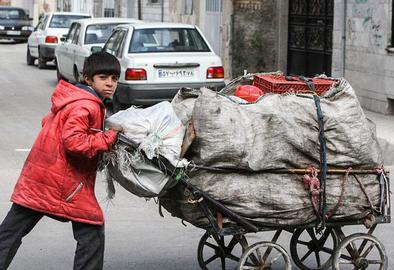Every Wednesday at 8pm Iran time, our Persian team hosts a talk with a well-placed expert on issues related to children’s rights. This week’s subject was school dropouts in Iran, the guest Saeed Peyvandi, a sociologist and professor at the University of Lorraine.
One of the most serious, under-reported harms of the coronavirus pandemic was its impact on children’s education, especially in countries like Iran where schools are under-resourced. In 2021 air pollution and blackouts also affected schools’ ability to run properly, while rising livelihood problems in many households prompted some children to go into work.
The number of youngsters facing a compromised, even ruined future as a result of recent events is hard to quantify, Peyvandi told IranWire. "The only objective and accurate source of statistics on children deprived of education are the censuses, which present people according to their age and primary location: that is to say, the school, home, or workplace."
No statistics are yet available in Iran with which to measure the dropout rate over the past 24 months. In off-hand comments, however, government officials have put the figure at an estimated three million.
“Children have always been dropping out of school early in Iran,” Peyvandi says. “But officials say the coronavirus crisis exacerbated this. This global issue has led to the weakest students in many countries, both in terms of social class and level of education, suffering the most. Many of these students never went back to school [after Covid].”
In terms of the educational attainment of youngsters during successive lockdowns, Peyvandi says, the picture is similarly murky. "Remote learning, be it through television or the internet, does not indicate how well they have actually been equipped to move forward. There is no cross-sectional evaluation in Iran. In many parts of the world, national assessments are performed every six months, but no such assessments are conducted in Iran."
What Will Happen to the Children Who Left?
"Children who have dropped out of school in Iran generally don’t face a bright future,” Peyvandi says, “because the government has no plans to reintegrate them into education."
He believes the only solution is to make education compulsory: “The government in Iran must do this immediately. All children, both boys and girls, have an equal right to education. In Iran, about a quarter of children never complete their compulsory education. This means the government is not really doing its job."
According to government statistics, there are at least one and a half million working children in the country. "One and a half million, according to official statistics alone, is very high,” says Peyvandi. “Unfortunately, it’s increasing. For about 15 to 20 years, the rate of 25 percent rate of children leaving school early hasn’t improved. There has been no significant decrease.
"The fate of these working children is worrying. When we say working children, we mean the child who goes scavenging in Tehran and the big cities to find something to sell. These children are being hired by ‘garbage mafias’ on very low wages. Some, aged 14 or 15, might become kolbars; 12-year-olds may engage in smuggling fuel. They leave the education system without any skills and as a result, will remain simple workers, subject to all kinds of abuse. Very few of them are likely to escape this destiny.
“Another tragedy is the marrying-off of girls under the age of 15. On average, 40,000 girls under 15 get married in Iran each year. In contrast with the laws in most countries of the world, Iran allows girls to marry at the age of 13. Instead of going to school or playing games, these girls become mothers.”
Fears for a Future Iran
Peyvandi believes that with so many young lives stunted, an unpleasant future awaits Iran. Widespread school dropouts now could threaten the socio-political system, while regressive behaviors like child marriage are holding society back.
“Already, the shrinkage of manpower is an important issue in Iran: Iran has been badly hit by the emigration of elite professionals. Specialists are leaving because of the current situation. The horizon of sustainable and human development in Iran is, regrettably, hazy; this isn’t good news for Iranian society.”
Does the government have a plan for dealing with this? “In Iran's official policies,” Peyvandi says, “there has never been an indication that either education, or addressing such issues, are a priority for the government. They’re so excited about building high-range missiles to destroy Israel, that they have not – in the last five years – given any kind of plan to reduce the number of working children or school dropouts. We live in a country where education is not a priority.”
Related coverage:
MP Blames Child Marriage and Poverty for Spiralling School Dropout Rate in West Azerbaijan
Groundhog Day as Iran's New Education Minister Unveils his Manifesto
One Third of School Pupils are Illiterate and Lack Basic Maths
Fact Check: Do Afghan Children Enjoy Free Education in Iran?
Afghan Child Workers in Iran: Registered but still Trafficked
They Don’t Know What Childhood is. The Saga of Child Laborers in Iran
Fact Check: Are Most Iranian Street Children Foreign Nationals?
visit the accountability section
In this section of Iran Wire, you can contact the officials and launch your campaign for various problems























comments